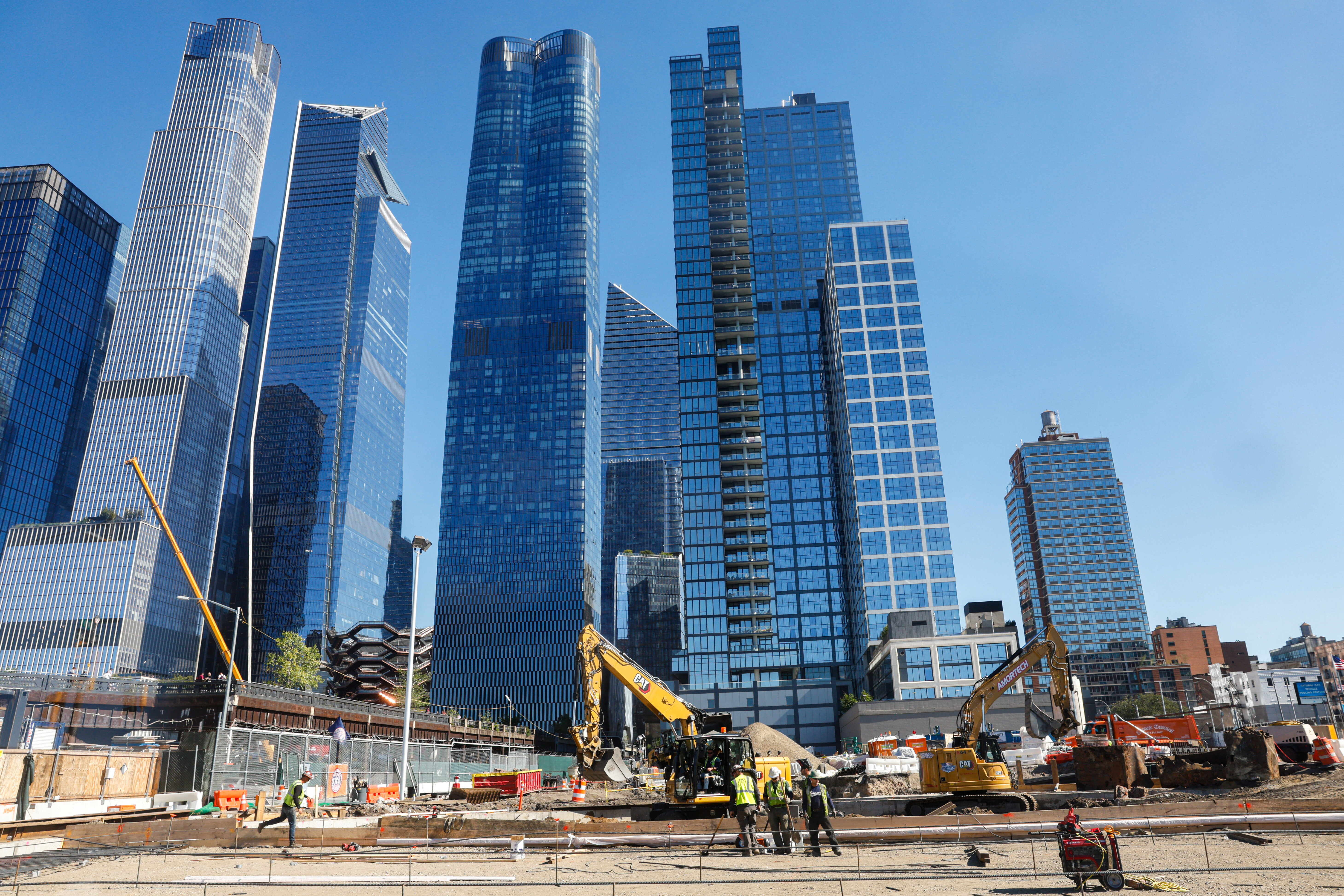How can Europe’s cities make housing more affordable?

Can the housing market keep up with urban population growth?
Image: REUTERS/Stefan Wermuth
Stay up to date:
Infrastructure
Building suitable and sustainable accommodation for growing populations is becoming one of the biggest urban challenges facing Europe’s big cities.
London, for example, is expected to grow by 8.8 percent to 9.5 million by 2026 and Berlin to grow from 3.5 million to 4 million by 2035.
“Affordability is a huge issue and has a big impact on cities, their ability to attract talent and sustain economic growth,” says Adam Challis, Head of UK and EMEA Residential.
“Failure to address this issue can become an existential problem for the city itself, ultimately weakening the very quality of life and employment opportunities that are driving urbanization across the globe.”
Facing up to the challenge
Cities are increasingly aware that doing nothing is not an option.
“There’s no perfect answer, but we are beginning to see the emergence of some ideas that have the best chance of arresting the worst of the impact of rising city populations,” says Challis.
In London, the answer so far has simply been to build more. The UK capital’s mayor, Sadiq Khan, has targeted the construction of 116,000 affordable homes by 2022. In the UK financial year to the end of March this year, work had begun on 14,544 affordable homes.
“Solutions can focus on expanding development and sharing the cost of new supply,” says Challis. “But that alone won’t be enough.”
Homes are already getting smaller – not quite to levels seen in Hong Kong – but they’re getting closer to the 37 sqm legal minimum size of a new one person, one bed flat in London. New methods, such as modular construction, can help to reduce the time and cost required to build more affordable homes in one of the world’s most expensive cities.
Japan’s biggest housebuilder, Sekisui House, recently ploughed £22 million of new equity into a modular homebuilding venture in partnership with the UK government’s Home Building Fund.
“Shared-risk solutions in funding development, combined with innovations in planning, are a step forward,” says Challis. “As is the arrival of more professional, institutional capital able to deliver the homes that cities such as London so desperately need.”
Getting political
Government policy can also make a huge difference. Khan has pledged to cap London rents as part of his 2020 re-election campaign – something which would require agreement at national level.
Local authorities in Spain’s big cities are taking their own steps to reduce the number of empty buildings and holiday rentals amid soaring rents for locals. Barcelona, for example, is issuing fines of up to €30,000 to owners of empty buildings.
Madrid’s regional government is reclassifying private holiday rental apartments as hotel accommodation, while Palma and Valencia are also tightening their holiday apartment rental rules in the hope of allowing local residents a chance to live in central locations.
Likewise, Amsterdam is looking to curb the sale of apartments to investors who are not intending to live in them via a new law which is due to be passed later this year.
A helping hand
While schemes such as Help to Buy in the UK, in which the government financially supports first time buyers, have given people a leg onto the property ladder, they’re far from being a one-size-fits-all solution as house prices remain high.
In contrast, Amsterdam authorities have announced plans to cap the cost of new homes at between €175,000 and €297,000, below the current average €302,000 price of a Dutch home.
“Broadly speaking, middle income populations aren’t catered for by affordable housing solutions in major cities and can’t afford new housing in the private sector,” says Challis. “In cities where prices have risen significantly, there’s certainly need for a redefinition of what affordable really means.”
The German capital of Berlin has been at the center of debate – and demonstration – around affordable housing a sharp increase in apartment rents in recent years as the city’s populations soars. Regulated rents and the city’s mietpreisbremse (rent level brake) are judged to have been insufficient to keep city living affordable.
New measures, such as the ability for new tenants to know what an apartment’s previous rent levels were set at, are being mooted, while a vote is set to take place on the expropriation or buyback by the state of apartments from major residential property companies. The city of Berlin could also legally bind developers and investors to ensure affordable rents and sales prices.
Just like in London, the option of building more is feasible. But with rising construction costs and a lack of land available for development, one solution could lie in more collaboration with Berlin’s neighboring Brandenburg region to build more homes within its boundaries and connect them to Berlin through fast rail connections.
More joined-up – and longer-term – thinking would be welcome across all major metropolitan areas, according to Challis.
“There are some clear challenges to overcome, including the protection of existing populations and employment as well as minimizing the financial burdens imposed on individuals, the development community and the state,” he says.
“There’s no real end in sight to the growing population of major cities so local administrations need to plan for the future while also finding solutions to current pressures.”
Don't miss any update on this topic
Create a free account and access your personalized content collection with our latest publications and analyses.
License and Republishing
World Economic Forum articles may be republished in accordance with the Creative Commons Attribution-NonCommercial-NoDerivatives 4.0 International Public License, and in accordance with our Terms of Use.
The views expressed in this article are those of the author alone and not the World Economic Forum.
Forum Stories newsletter
Bringing you weekly curated insights and analysis on the global issues that matter.
More on Urban TransformationSee all
Jeff Merritt and Vivian Brady-Phillips
November 6, 2025
Jeff Merritt and Andras Szorenyi
November 3, 2025
Marielle Anzelone and Georgia Silvera Seamans
October 31, 2025
Antonio Gómez-Palacio
October 31, 2025
Børge Brende and Ahmed Al-Khateeb
October 29, 2025





